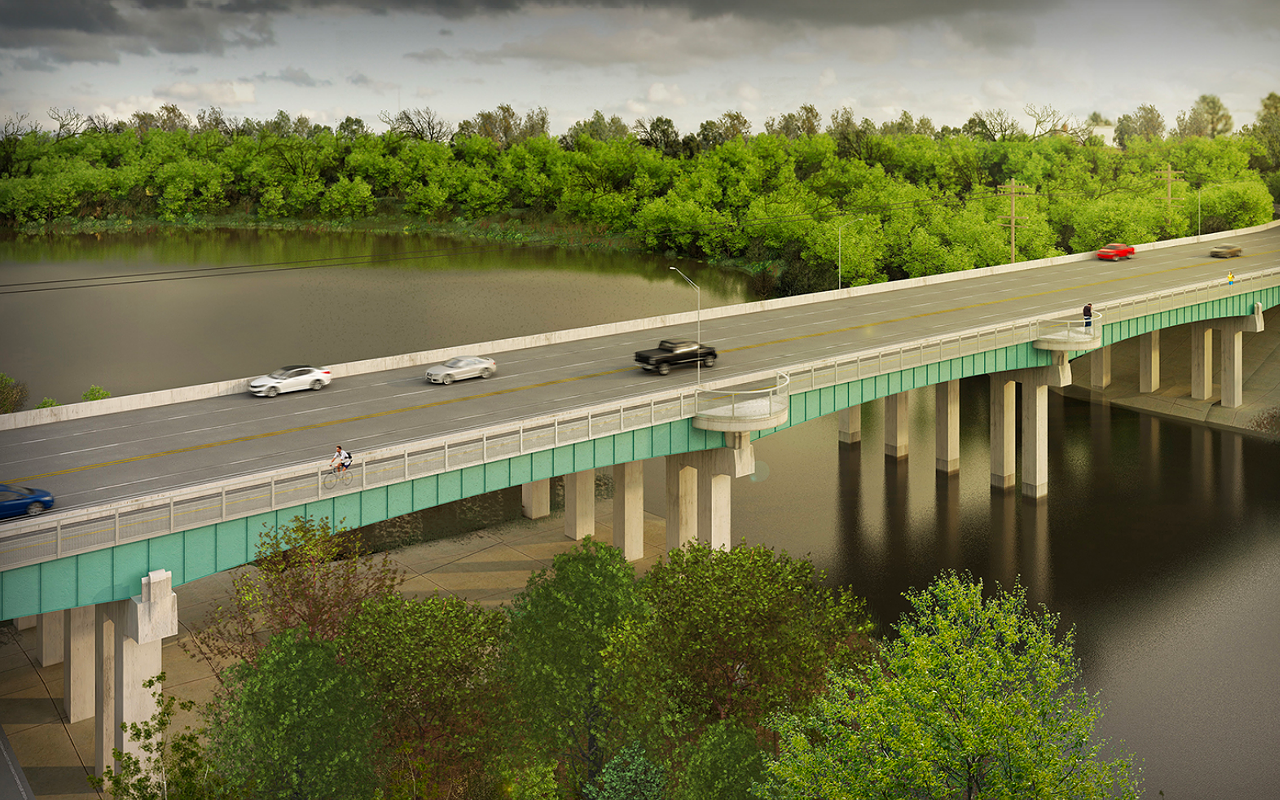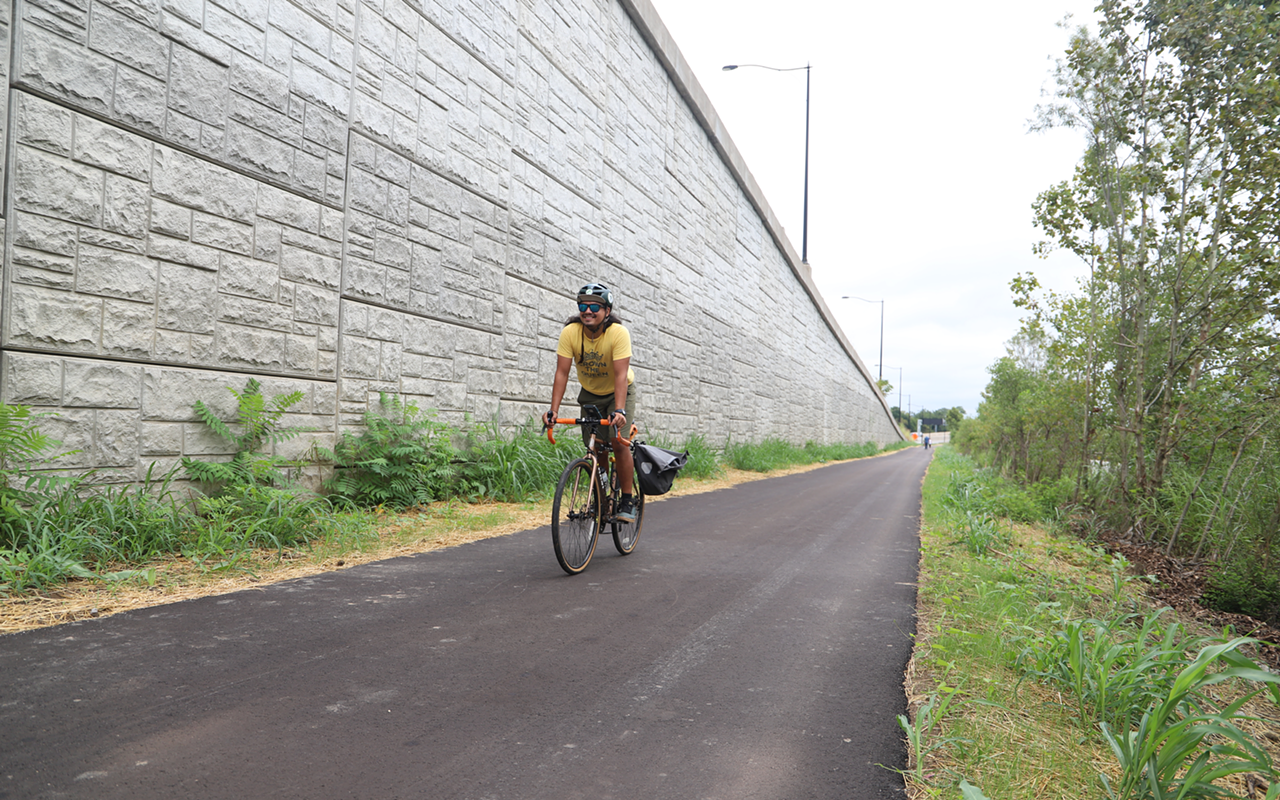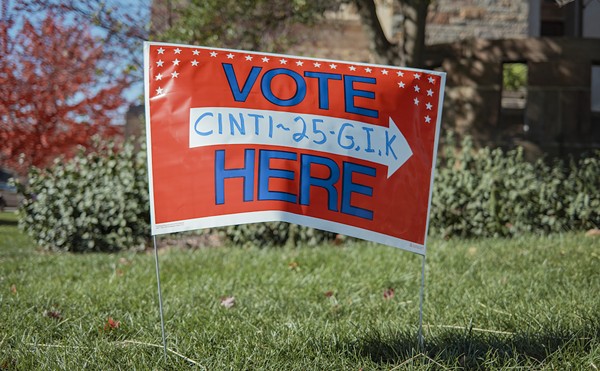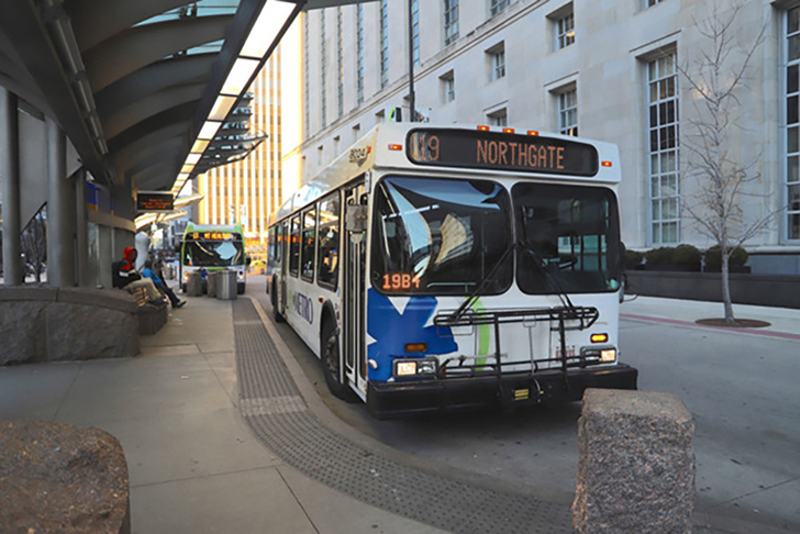
Photo: Nick Swartsell
SORTA and Metro are conducting a study through March 2023 to determine which bus rapid transit corridors will make the biggest impact on its riders.
Cincinnati Metro has unveiled four possible options for new rapid bus corridors that the agency says will allow riders to travel faster than ever.
Brandy Jones, senior vice president of external affairs for Metro, says there’s a big difference between a regular city bus and bus rapid transit (BRT).
“The closest comparison is if you’re familiar with taking rail,” Jones says. “It moves faster through a corridor, there’s off-board payment, a lot more convince to get a long distance, but it has the flexibility of being on rubber tires.”
Jones says BRT is more like a train than a bus because of how infrequently it stops, both for passengers and for traffic lights.
“Unlike a traditional bus route where you’re probably going to see a bus stop every block, every other block, a BRT corridor has much fewer stops. They’re going to have very specific spots where they correlate to the most potential ridership would board.”
Because more riders will board BRT at once, they'll pay their fare in advance, speeding up the process. Even though there will be fewer stops, Jones says riders can expect a BRT bus to arrive every 10-15 minutes.
The other BRT difference that speeds up the route is signal priority.
“When a traffic signal realizes that a BRT bus is approaching – say there is a green light – it’s going to stay green longer to let the bus get through the corridor or just give the priority to the bus so you’re not getting stopped at as many lights as a car would,” Jones says. “In some ways, you may be able to get through the corridor faster than you can in your personal car.”
There are other rail-like qualities Metro says riders can expect with BRT busses:
- Station stops more widely spaced than traditional bus routes
- Attractive, clean, comfortable stations
- Buses with WiFi and charging ports
- Real-time bus arrival display signs
- Fully accessible stations with same-level entry into buses
- Boarding and exiting through any door
The potential for economic growth
Metro has proposed four possible options for BRT routes to launch sometime in 2027: Glenway Avenue, Hamilton Avenue, Reading Road and Montgomery Road. Only two will be implemented at first.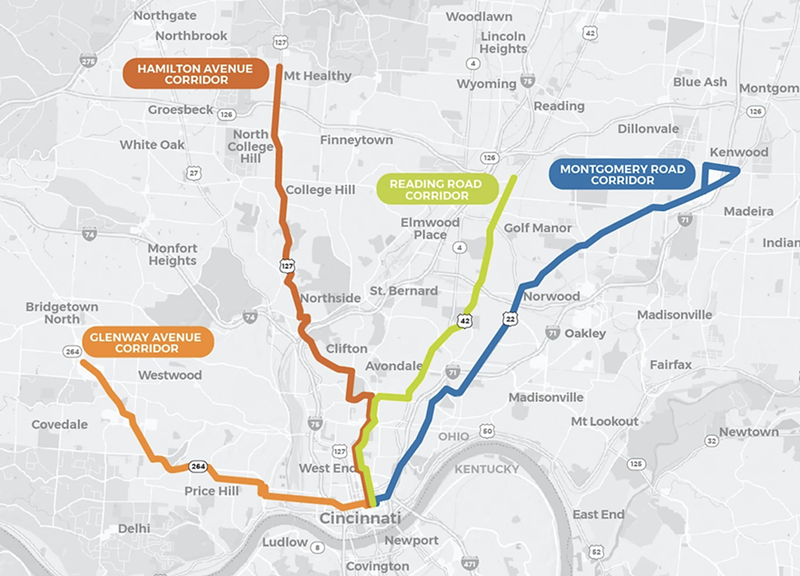
Photo: Cincinnati Metro
Metro has proposed four possible options for bus rapid transit routes: Glenway Avenue, Hamilton Avenue, Reading Road and Montgomery Road.
Metro says the four corridors represent their most popular transit routes, each moving more than one million riders each year.
Southwest Ohio Regional Transit Authority (SORTA) and Metro are conducting a study through March to determine which rapid corridors will make the biggest impact on its riders.
“We’ve already determined each corridor has some aspect of this, but it’s about which two will have the greatest amount of impact,” Jones says.
Funding is currently only available for two corridors, but Meto says it's possible BRT will expand to all four corridors eventually. For now, it's about identifying where the greatest need can be met.
The study will evaluate each corridor’s ability to attract riders, improve transit speed and connectivity, provide more equitable access, support the installation and operation of BRT infrastructure, and support economic development opportunities, Metro says. The agency is using rider data, economic development insights and public feedback to guide the study of each corridor.
Funding is currently only available for two corridors, but Meto says it's possible BRT will expand to all four corridors eventually. For now, it's about identifying where the greatest need can be met.
The study will evaluate each corridor’s ability to attract riders, improve transit speed and connectivity, provide more equitable access, support the installation and operation of BRT infrastructure, and support economic development opportunities, Metro says. The agency is using rider data, economic development insights and public feedback to guide the study of each corridor.
Any BRT corridor will need its own dedicated bus lane to make the speed and efficiency of the rapid route possible. Jones says Metro will need to determine which two corridors of the four candidates will have the best chance at either repurposing a driving lane or building a new dedicated BRT lane.
Jones says there’s also an economic consideration for riders and businesses when choosing which neighborhoods get a rapid bus.
“Where are companies looking to build? Where are construction companies looking to add new apartment complexes or businesses or service? We’re thinking about through the economic development lens as well,” Jones says.
How to get involved
Metro is asking those who live near a potential BRT route and those who are invested in the implementation of a particular route to get involved in the study.“We don’t just want this to be metrics and numbers and data,” Jones says. “That’s all very important, but we want to humanize it. How is this going to help the people along this corridor. That feedback is going to be critical as the study goes along.”
In addition to an online survey, Metro will be collecting in-person feedback on the proposed BRT routes during a series of public feedback sessions:
- Oct. 3, Community Action Agency, 1740 Langdon Farm Rd., 4-7 p.m.
- Oct. 11, Avondale Branch Library, 3566 Reading Rd., 5:30-7:30 p.m.
- Oct. 12 Evanston Recreation Center, 3204 Woodburn Ave. 5:30-7:30 p.m.
- Oct. 13 Price Hill Branch Library, 970 Purcell Ave., 4-7 p.m.
- Oct. 17 College Hill Recreation Center, 5545 Belmont Ave., 4:30-7:30 p.m.
- Oct. 18, Virtual Meeting, noon -2 p.m.
- Oct. 18, Virtual Meeting, 5-7 p.m.
- Oct. 19, Clifton United Methodist Church, 3416 Clifton Ave., 4:30-6:30 p.m.
Stay connected with CityBeat. Subscribe to our newsletters, and follow us on Facebook, Instagram, Twitter, Google News, Apple News and Reddit.
Send CityBeat a news or story tip or submit a calendar event.

